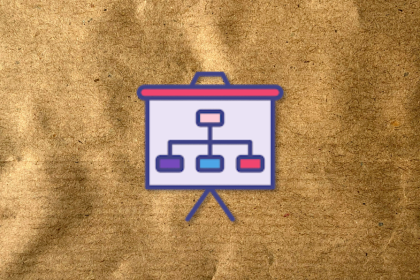Alicia Littleton is Director of Ecommerce at Gerber Childrenswear LLC. She began her career as a technical project manager at EVG Media before becoming a senior technology analyst at EP+Co. Before her current role at Gerber Childrenswear, Alicia taught as an adjunct professor for digital strategy for brand communication at Clemson University.

In our conversation, Alicia talks about the importance of empathy and flexibility in the workplace when team members go through life changes, such as welcoming a child into their life or experiencing loss. She shares how she’s adapted her teams around these circumstances and how these flexible policies benefit the employees, managers, the broader team, and the company.
From a leadership perspective and as a mom, I have so much empathy for anyone going through a major life change like welcoming a new child, handling loss, or going through other life transitions as well. As a parent, every time you think you’ve figured something out, things change and you have to figure it out all over again. This is why I feel like parents are some of my best employees — they are so good at change management. They’ve learned to be adaptable and flexible.
Everything I do as a leader is rooted in empathy, flexibility, and advocacy. I didn’t have a lot of strong leadership support when I was becoming a mom for the first time or later when I had my other children. Now, I focus heavily on making sure that I can be the best advocate for my coworkers and my employees as I can be.
As a manager, you need to manage the business needs while remaining empathic to someone’s life situation. This includes both the joyous and the difficult situations that come up. With parental leave, specifically, there’s a hole in your team for the period when the person is out of the office. Often, if you’re a manager and your employee says they’re having a baby, the first thing that pops into your head is, “Oh no, what am I going to do — I’m losing somebody for three months.”
There’s a huge ramp-up before an employee leaves, as well as an adjustment period when they come back. They’re not going to come back how they left, even though the employee themselves often has an unconscious bias that they’re going to return exactly to how they were able to work before. That’s why I find that redistributing workloads is very important. Managing temporary coverage as a manager is essential to work through, as well as proactively addressing concerns from the rest of the team about bandwidth. That’s first and foremost from the management side.
Finally, don’t make assumptions. Keep an open line of communication, not only with the individual going through that life change but also with your whole team that they interact with regularly. Having those lines of communication open ensures not only that the employee has the support that they need, but that their team does as well as they manage the effects.
Every company is unique. From a business perspective, small companies may not have the flexibility to create strong leave plans. From my experience working across different verticals and spaces, I’ve found that companies often hesitate to create a well-supported, structured plan because they worry it will get abused. Thankfully, I’ve worked for companies that don’t hesitate, but I can’t say that that’s completely unfounded because it does happen, but it’s rare.
There’s risk in anything — whether it’s a parental leave plan or bonus plan, there’s always a chance that somebody will try to figure out how to get around the system. That being said, companies that have truly supported parental leave have seen their employee retention rates skyrocket.
The number one thing that every single well-structured parental leave plan has in place is flexibility. I would go as far as to say that you should make sure that any manager who has an employee who will be taking a leave should have the flexibility to make decisions based on ebbs and flows. That’s the ability to say, “We recognize this is a unique situation, and we have the flexibility to create a unique plan just for them.”
For example, the twins of a new dad on my team were born prematurely and were in the NICU for two weeks. He said, “I’d rather wait and take my parental leave when they come home so I can be there to support my wife and kids.” We played around with that and had him work half days while the babies were in the hospital. Then, his official parental leave started when they went home. Being able to come up with flexible solutions is key.
Communication — I can’t stress it enough. Also, it’s really helpful to work with that particular team member to create an action plan. Document your steps. Use AI technology to create flow charts and walkthrough guides so that whoever is tasked with a piece of their work can reference it. Documentation is helpful for everybody.
Personally, my favorite part of anybody going out on leave is that it allows me to better understand the “nitty-gritty” of their roles. Sometimes, we get things on our plates that shouldn’t be there. In every instance where I’ve had somebody go on parental leave, I found they had been doing at least one task that I didn’t even know about. This is a fantastic opportunity as a manager to completely reassess a role, understand what someone does every day, and alter those responsibilities as you see fit.
The most challenging scenario is when somebody returns during a peak season. Anyone in ecommerce or retail will understand the ramifications of this — I had five people go out at the same time during Black Friday. That was nuts. But, when they came back, it was past peak season and I had all the time in the world to reintegrate them. On the flip side, I’ve had somebody come back from parental leave during Black Friday, and I didn’t have much bandwidth at that time for onboarding. The best advice I can give to anybody who’s doing a re-entry plan is to treat an employee who is returning from leave like a new hire in some ways.
I tell them, “I’m going to invite you to every meeting in my calendar. I want you to act like a fly on the wall and suck in all of the information.” I ask them to write down all of their questions and then sync up at the end of the week to address all of them. While someone is out of the office on leave, things continue to move at 90 miles an hour. Sometimes they are surprised at what they have forgotten or no longer know. That’s why it’s important to have them initially just sit, listen, and observe.
I do my best to handle coverage internally, but in past roles, I had the luxury of working with third-party teams that I could onboard quickly to expand needs. That’s not always the case depending on the role, though. For example, if a project manager on my team is going out, it’s going to be hard to give project management tasks to an external resource. Not every role is capable of having external resources to support it. Also, by the time you ramp up somebody new, it’s time for them to leave again.
As a best practice, I ask the person going on leave to come up with a list of things that they do, and then have them tell me who they think is best equipped to take it on while they’re gone. I ask if they think we need to hire externally or if there’s someone internally who could handle the work. Then, I check in with those individuals and ask if they feel they could take on the extra work or if it would overwhelm their workload.
In some cases, I get creative and end up juggling multiple people’s roles just to be able to support the one person who is out. Also, anytime someone on my team is on leave, I put my expectations for what I can accomplish at half mast so that I can support that absence too.
Childcare is very hard to access in our area — waitlists are up to 18 months out in some places. I had an employee who was on five waitlists but had a gap in childcare for the next three months. From my experience, one of the most important considerations of crafting a custom plan, is making sure that there is a hard end date, which this person had.
Our company has a hybrid work policy, so we ended up working out a plan where this individual could work remotely for specific hours during the day, such as in the mornings or when her kids were sleeping. We agreed ahead of time what that timing looked like. This way, I knew when she was going to be active, and the team knew when they could schedule meetings with her in this interim period. She also came into the office one day a week when had a sitter or nanny, which worked out well.
We followed this plan for three months, and I applaud my team for being able to support such a unique instance. It was a great opportunity for us to say, “OK, how can we help?” Because we get it. Childcare is stressful to deal with. We’re very grateful that we were able to allow the flexibility to craft a plan that enabled us to retain a great employee and her to keep a job she really loved.
In my own personal experiences as a parent, as well as every professional experience where I’ve partnered as a leader or mentor, every situation was unique. The people who feel like they have support from leadership will be your best employees. It may take some time to ramp them back up after they return, but when they do, you’ll have an employee who is willing to go the extra mile and is extremely loyal to the company. And, parents in particular, will often become the best problem solvers on your team.
There’s a lot to be said about the pros of remaining flexible on the business side. Some of my best team members are those who have gone through a transition period with and have come back feeling trusted and supported. When you invest in your team members, they will 100 percent invest back.

LogRocket identifies friction points in the user experience so you can make informed decisions about product and design changes that must happen to hit your goals.
With LogRocket, you can understand the scope of the issues affecting your product and prioritize the changes that need to be made. LogRocket simplifies workflows by allowing Engineering, Product, UX, and Design teams to work from the same data as you, eliminating any confusion about what needs to be done.
Get your teams on the same page — try LogRocket today.

A practical five minute revenue estimation method to help product managers compare ideas, drop low impact features, and prioritize smarter.

A practical guide for PMs who want to stop being bottlenecks, delegate smarter, and lead teams effectively with a clear ownership framework.

Stop letting unreliable data block features. Treat data as inventory to track quality, ownership, and ship with confidence.

Learn why slide decks slow teams down and explore better tools like whiteboards, PRDs, and prototypes to improve collaboration and alignment.